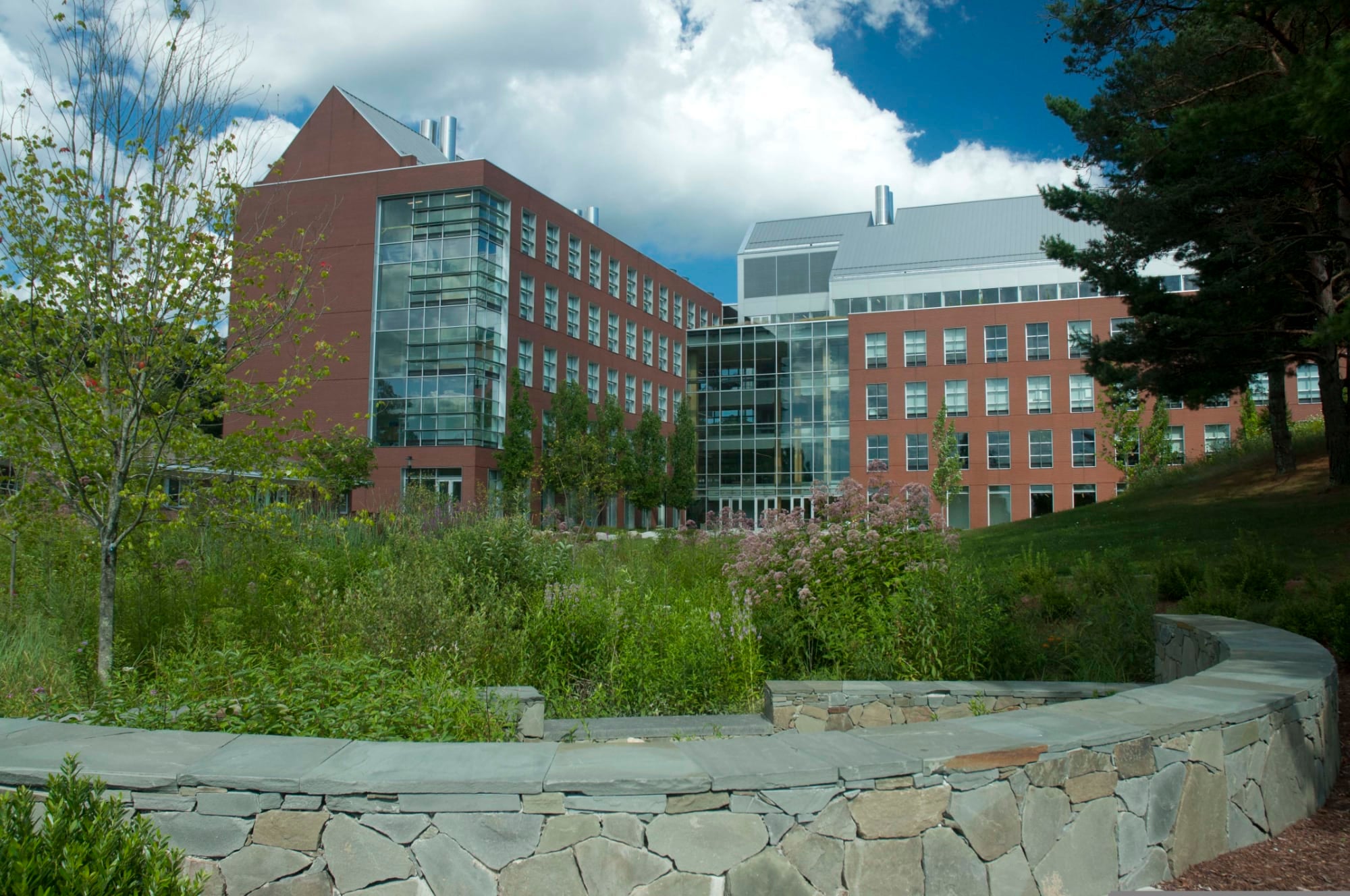KINGSTON, R.I. — April 28, 2010 — When the University of Rhode Island’s $54 million Center for Biotechnology and Life Sciences opened last year, it was hailed as a state-of-the-art facility that would advance scientific research and serve as a hub for education, research and job creation in the life sciences.
This year, the U.S. Green Building Council, a non-profit trade organization that promotes sustainability in how buildings are designed, built, and operated, named the URI facility a Leadership in Energy and Environmental Design (LEED) Gold building. It is the first Gold recognition for URI. The top LEED designation is platinum, with gold, silver, and certified following in descending order.
Payette Associates was responsible for the design of the building to meet the strenuous LEED “Gold” standards. Lerner Ladds + Bartels was the lead consultant for handling the administrative process involved with the LEED certification process. During the design process, the Green Roundtable, Inc. of Boston provided assistance in evaluating the design and advising the team on various approaches to fulfilling the LEED requirements. Gilbane Building Company of Providence served as construction manager.
The Princeton Review’s Guide to 286 Green Colleges, published this spring cited URI as one of the nation’s most eco-friendly campuses. The U.S. Green Building Council, the same council that designates the LEED awards partnered with the Princeton Review to create the list.
“The LEED award is the result of a determined team of design architects, building committee, capital planning and capital project staff and many more that worked on the design and construction,” said Robert A. Weygand, Vice President for Administration and Finance. “It is very difficult for a research and teaching laboratory building to reach this status. Complicated ventilation systems can be very, energy consuming. We were able to put in the most energy efficient system and as a result we were able to construct a sustainable building.”
The structure’s sustainable features include a ‘green’ roof that is partially covered in vegetation that filters pollutants and reduces heating and cooling needs; a rain garden and storm water treatment feature with a sophisticated drainage and detention system; daylight harvesting technologies that brighten rooms and warm the floors; and an energy efficient heating and cooling system. One hundred percent of the wood used in construction was certified by the Forest Stewardship Council to have come from forests managed in a sustainable way. About a third of the materials used in the building had been previously recycled. Speaking of recycled, 79 percent of construction waste was recycled.
The energy efficiency measures installed in the building save about $135,000 per year in utility costs.
The URI biotech facility isn’t the only LEED certified building on the Kingston campus. The 47,000 square-foot Hope Commons, a comprehensive dining, snack, and mini-market facility was named a LEED silver building.

